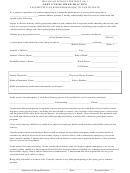Open Chords And Capos 1
ADVERTISEMENT
Open Chords and Capos
Key
I
IV
V7
G
G
C
D7
If you need to play a tune using the basic
A
A
D
E7
chords (I, IV, and V7) in some keys other than
G, A, C, D, or E (as in many times the case
C
C
F
G7
due to consideration such as vocal range) and
if the piece calls for the sound of ringing open
D
D
G
A7
strings in your rhythm guitar part, the capo is
the answer to your problem. It enables you to
E
E
A
B7
play in al twelve keys and affords the option of
alternate chord forms and inversions, giving
By placing your capo on the second fret, for
you the choice of exactly the should you want.
instance, you can play as if you are in G major
It also allows you and another chord forms,
(using G, C, and D7 chord forms) and in reality
thus creating a thicker, richer texture.
you are in A major (playing, as they actually
should, A, D, and E7). I have very rarely seen
In many types of music, the I, IV, and V&
a capo used any higher than on the fifth fret;
chords are by far the most important and
but it is commonly this high, though.
frequently played. (These roman numerals are
derived from the major scale starting on the
The following chart lists all your options for the
note of the same name as the key in which
five sets of chord forms which employ open
you are playing. C major, for example, is thus
strings.
labeled:
I II III IV V VI VII
Open
G
A
C
D
E
1st fret
Ab
Bb
Db/C#
Eb
F
C D E F
G A
B
2nd fret
A
B
D
E
Gb/F#
The C, F, and G7 are the chords built on the
3rd Fret
Bb
C
Eb
F
G
first, forth, and fifth scale degrees. The
following chart shows the I, IV, and V7 chords
4th fret
Bb
C
Eb
F
G
for the five major keys which feature open
5th fret
C
D
F
G
A
chord forms.
Open Chords and Capos - Published originally in Acoustic Guitar
1
ADVERTISEMENT
0 votes
Related Articles
Related forms
Related Categories
Parent category: Life
 1
1








